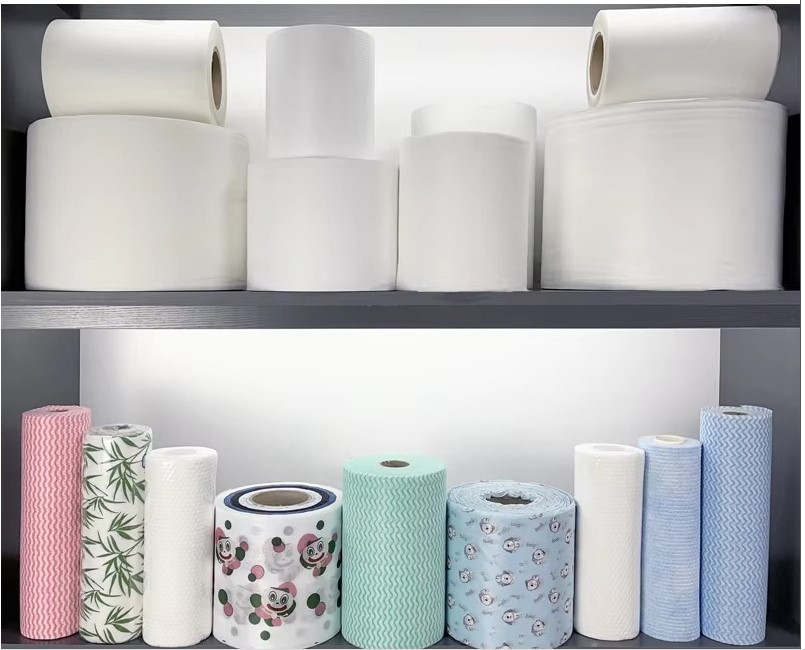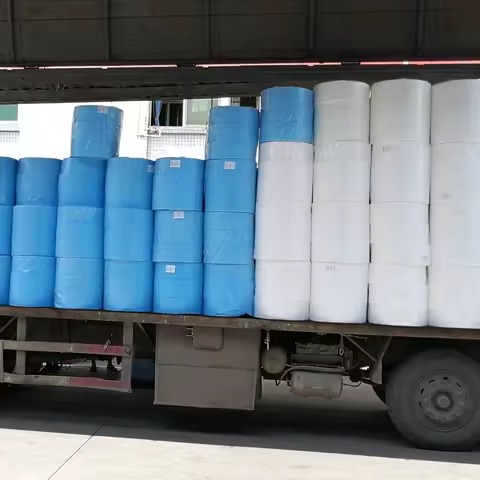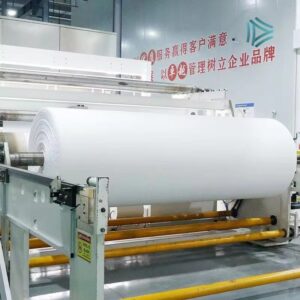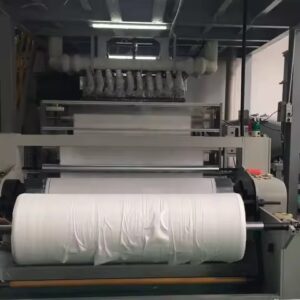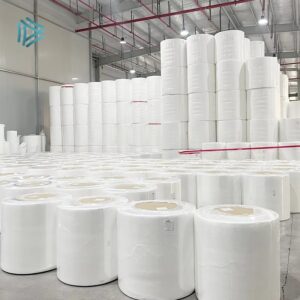Economic & Industrial Outlook for Spunlace Nonwoven Fabrics
Introduction
The global textile industry is undergoing a major transformation, driven by rising consumer demand for sustainability, hygiene, and cost-effective materials. Among the many textile categories, Spunlace Nonwoven Fabrics have gained significant momentum in recent years due to their unique combination of performance, versatility, and environmental friendliness.
As governments introduce stricter bans on single-use plastics, healthcare systems expand, and personal care industries flourish, the economic outlook for spunlace fabrics is highly promising. At the same time, manufacturers face challenges such as raw material costs, competitive pricing pressures, and the need for green innovations.
This article examines the current market trends, industrial growth drivers, challenges, and opportunities shaping the future of spunlace nonwoven fabrics worldwide.
1. Global Market Trends
1.1 Rapid Growth in Hygiene & Healthcare Sectors
The COVID-19 pandemic accelerated global demand for spunlace fabrics, especially in masks, gowns, and wipes. Even after the pandemic, the heightened awareness of hygiene continues to drive long-term growth.
Medical Textiles: Spunlace is a core material for surgical drapes, wound dressings, and protective clothing.
Personal Hygiene: Expanding markets for baby wipes, feminine hygiene products, and adult incontinence care are boosting demand.
Household & Industrial Cleaning: Strong adoption of spunlace cleaning wipes is replacing paper-based products.
1.2 Sustainability as a Market Driver
Governments worldwide are pushing for eco-friendly alternatives to plastics, creating strong opportunities for spunlace made from biodegradable fibers like cotton, bamboo, and viscose. Flushable and compostable wipes, in particular, are becoming a major growth category. These opportunities are supported by material innovations and future trends in spunlace
1.3 Regional Market Expansion
Asia-Pacific (APAC): The largest and fastest-growing market, led by China and India, due to strong manufacturing capacity and rising domestic demand.
Europe: Growth driven by strict environmental regulations and consumer preference for eco-friendly products.
North America: Strong demand in healthcare, hygiene, and packaging, with sustainability pushing innovation.
Middle East & Africa: Emerging markets with rising investments in healthcare and sanitation infrastructure.
2. Key Growth Drivers
2.1 Healthcare Expansion
Global healthcare expenditure is increasing, and disposable spunlace products reduce infection risks while being cost-efficient. Hospitals and clinics are shifting away from reusable textiles toward single-use spunlace gowns, masks, and drapes.Healthcare expansion is directly linked to the applications of spunlace fabrics in medical industries.
2.2 Urbanization & Lifestyle Changes
With urban populations rising, consumer lifestyles demand more convenience-oriented products such as wet wipes, cosmetic pads, and disposable cleaning cloths. This trend strongly favors spunlace materials.
2.3 Plastic Ban Regulations
The tightening of single-use plastic bans in the EU, Asia, and North America is creating a market gap that spunlace is perfectly positioned to fill. Eco-friendly packaging, shopping bags, and food wraps made from spunlace are now mainstream options.
2.4 Technological Advancements
Innovations in fiber blending, functional finishes, nanofiber integration, and automated production are expanding the range of spunlace applications while lowering production costs.
3. Industrial Challenges
Despite strong growth, the spunlace industry faces several challenges:
3.1 Rising Raw Material Costs
Natural fibers like cotton and bamboo are subject to price fluctuations, while petroleum-based synthetics like polyester and polypropylene are tied to volatile oil markets. This creates cost instability.
3.2 Competitive Pressure
The nonwoven market includes alternatives such as spunbond, meltblown, and needle-punched fabrics. While spunlace offers superior softness and absorbency, it must compete on price and availability.
3.3 Environmental Concerns
Although spunlace can be biodegradable, many products still use synthetic fibers for strength. This can create waste management challenges if not designed for recyclability.
3.4 Infrastructure Limitations in Emerging Markets
In regions like Africa and Southeast Asia, limited waste management and recycling infrastructure may slow adoption of eco-friendly spunlace products.
4. Cost Optimization Strategies
To remain competitive, manufacturers are adopting strategies to optimize costs without sacrificing quality.
Blended Fiber Models: Using a mix of natural and synthetic fibers balances cost and performance.
Water & Energy Efficiency: Closed-loop hydroentanglement systems recycle water and reduce energy usage.
Automation & AI Integration: Robotics and smart sensors lower labor costs and improve production consistency.
Local Sourcing: Reducing reliance on global supply chains to minimize transportation costs and disruptions.
By improving efficiency, companies can deliver high-quality spunlace at competitive prices.
5. Competitive Landscape
The spunlace market is characterized by a mix of global giants and regional players. Major companies are investing heavily in new production facilities, eco-friendly product lines, and R&D.
Global Leaders: Large multinational nonwoven producers dominate healthcare and hygiene markets.
Regional Specialists: Local companies in Asia and Europe often focus on niche applications such as cosmetics or packaging.
Startups & Innovators: Emerging firms are experimenting with biodegradable composites, algae-based fibers, and nanotechnology integration.
This competitive diversity is fueling innovation while making the market highly dynamic.
6. Future Opportunities
The next decade will see significant expansion of spunlace nonwoven fabrics, driven by multiple opportunities:
6.1 Biodegradable & Compostable Products
Consumer demand for flushable wipes, biodegradable diapers, and compostable packaging is expected to skyrocket. Spunlace made from natural fibers will dominate this segment.
6.2 Advanced Medical Textiles
Antimicrobial and smart spunlace fabrics will gain importance in healthcare, enabling infection-resistant gowns, self-healing dressings, and IoT-enabled medical textiles.
6.3 Packaging Innovations
With plastic bans intensifying, spunlace will increasingly be used in eco-friendly bags, food wraps, and delivery packaging.
6.4 Smart Manufacturing & Industry 4.0
Automation, AI-driven monitoring, and digital design tools will lower costs while enabling mass customization of spunlace fabrics.
6.5 Expanding Applications in Agriculture & Construction
Spunlace crop covers, erosion-control sheets, and insulation panels will create new industrial markets for nonwovens.
7. Market Outlook
Analysts project that the global spunlace nonwoven market will continue to grow at a compound annual growth rate (CAGR) of 7–9% over the next decade. By 2035, it is expected to surpass tens of billions of dollars in global revenue.
Key contributors to this growth will include:
Expanding hygiene product demand in emerging economies.
Rising healthcare expenditures worldwide.
Global legislation against plastics.
Continuous innovation in fibers, finishes, and production efficiency.
This positions spunlace as one of the most resilient and future-ready sectors in the textile industry.
Conclusion
The economic and industrial outlook for Spunlace Nonwoven Fabrics is undeniably strong. Driven by healthcare expansion, sustainability demands, plastic bans, and lifestyle changes, spunlace has secured its place as a critical material for the future.
While challenges such as raw material costs and competition persist, manufacturers are countering them with innovation, automation, and green production strategies. The industry’s adaptability ensures that spunlace will not only survive but thrive in the decades ahead.
From hospitals and households to farms and factories, spunlace fabrics are quietly shaping the global economy, offering a sustainable, high-performance alternative to both plastics and traditional textiles. Its future is bright, expansive, and central to the next era of material innovation.
“If you’re sourcing spunlace fabrics, see our quality control and buyer’s guide to make the right choice.”

